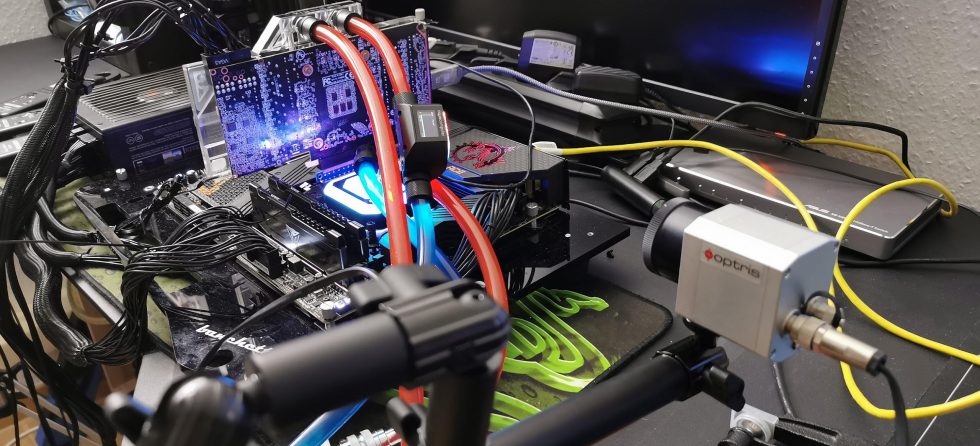All pads are not equal in quality, that’s not a news. But I can already hint and spoil in my function as padman, that money also cools. The hot GDDR6X on a NVIDIA GeForce RTX 3080 is suddenly 50% cooler? This is not a dream or a stupid marketing bubble, because it can be done. Unfortunately, it also costs a lot of money. But there are also the important steps in between, which are suddenly much cheaper to have and still bring decent improvements. That’s exactly where I’m going with my first article tomorrow and more to follow. So I’m not taking a creative break right now, I’m standing in the lab with my hands smeared. Because such tests really cost working and living time.
And it will be very interesting to see how imprints on a package and technical data suddenly dissolve into nothing, because almost no one can check it anyway. Well, almost, because that’s exactly what I did. With amazing results, by the way. There the one or other offerer will be allowed to dress probably warmly or it is provided by me with a praise, depending at the result. Tomorrow I will first start with four verified pads in four performance groups, whose stated thermal conductivity also corresponds to reality and whose costs are of course extremely scattered. From the free thermal pad (identical to NVIDIA’s original) in a cooler package with 3 W/(m*K) to the high-end available in the shop with real 14 W/(m*K) and prices for the rich heiress.
And I will also show you that a supposedly cheap China replacement can also be worse than a really expensive Japanese brand product with significantly lower, but honest and accurate values in the data sheet. To remain as accurate as possible, a reasonably constant water temperature is of course mandatory. Since I generally only give the readings for the pads in full degrees for the GDDR6X, the maximum fluctuation of well under a Kelvin that occurs here is quite useful, as it doesn’t affect the final results for the memory. There the curve remains absolutely straight. But I don’t want to spoil everything.
Tomorrow I will first set the references in the power classes up to 4 W/(m*K), up to 8 W/(m*K), up to 12 W/(m*K) and from 14 W/(m*K). All four tested pads also deliver what it says on the packaging (and in one case even more). Further tests will then show which product from the well-stocked specialist trade is any good and which is not. That’s why I test 1-mm pads on purpose, because they also come in 0.5-mm offshoots or even stronger. However, a thickness of 1 mm is absolutely sufficient to avoid getting into the measurement tolerances. Tense? Then you should also be satisfied from tomorrow!

































22 Antworten
Kommentar
Lade neue Kommentare
Urgestein
Urgestein
Neuling
Veteran
Mitglied
Veteran
Neuling
Neuling
Urgestein
Urgestein
Neuling
Veteran
1
Urgestein
1
Mitglied
Urgestein
Mitglied
Veteran
Alle Kommentare lesen unter igor´sLAB Community →